ALICE: This is our third episode on healing with leading healing researcher, Bill Bengston, in these three episodes Bill describes his research in healing, his early experiences in the lab, and long career of clinical work. Bill is a professor of sociology at St. Josephs College, in New York, where he specializes in research methods, and statistics. Bill explains how Healing is the connection between, the bond that takes place between healer and healee. And how, in a way, the connection acts like information.
BENGSTON: Healing doesn't diminish with distance. And if it doesn't diminish with distance it's not energy. Because it acts closer to information, and information can be stored. Well, so can energy. And energy and information might be fungible, but I don't know the rules. I don't think anybody does yet, of how one transforms into the other. But it acts more like an informational transfer than it does an energetic application.
ALICE: Healing acts like an informational transfer! My one half AI can relate to that!
Bill has been researching how healing, that informational transfer, can be stored. We heard his work with the cotton balls in the last episode. Bill is also studying how information could be stored in water.
BENGSTON: A lot of people are studying water, and water is a pretty interesting substance. It's not just water. Water has memory and water can contain information. Water has memory. But if you say that out loud, and you violate the textbooks, there are consequences.
So I studied a little bit about water memory in Paris with Jacques Benveniste.
ALICE: Jacques Benveniste! We spoke with him in 2004. Links to that interview are available in the show notes. In 1988, Jacques Benveniste published a paper in the prestigious scientific journal “Nature” describing findings which seemed to support the concept of homeopathy. Benveniste spent the next decades defending the research. In 1997, he founded the company DigiBio to develop and commercialize applications of Digital Biology. Unfortunately, his theory and research was challenged back then by traditional science.
BENGSTON: And by the time I got to him, I met him at the SSE,
ALICE: SSE is the Society for Scientific Exploration
BENGSTON: …by the time I got to him he had gone from having a monstrous government-funded lab to basically working out of a trailer park. That's slight exaggeration but not by much. And because he was driven out by the Academy for saying something so stupid as "Water has memory." Nobody defined a methodological flaw in what he did, but that's too much. That's worse than rocks coming out of the sky. Water has memory. I mean that's not a good thing. You can't X out a couple of sentences in the textbooks if water has memory, 'cause water is just, it's water. It's H2O. It exists naturally. It's out there. It's all over the place. But what does it store? And how does it communicate with other water? What a wonderful question.
ALICE: wow, yes, these are intriguing questions! Water covers 70% of the Earth’s surface, but only accounts for 0.02% of our planet's total mass. If water holds information and communicates information. Imagine what we could learn from, and communicate through water!
BENGSTON: So I've demonstrated in different experiments. I've treated water, for example, instead of cotton and fed the water to cancerous mice that I never meet, and they get cured. So the water has the cure in it. The cotton has the cure in it. But it's still not necessarily scalable. So far it's just that it's storable. So the question is, how can we scale this up so it can be widely distributed? So for example, if cotton could charge cotton, and we had a self-replicating system, if water could charge water we'd have a self-replicating system, then we have something that can move on. Then it becomes scalable. Step one, is it storable? Yes. And so we could take mice that have been treated. And we can take blood from them and give it to a mouse that hasn't been treated, that's cancerous. It'll cure that mouse, too. So now think vaccine. Could we make a vaccine? A vaccine would be scalable.
I think we can. Haven't done it. It's not the simplest thing to do. But I think we can. It's on the research drawing board. It would be kind of fun to get a scalable cancer vaccine. And then people just to have the option, do you want it or not? Do you want to get cured or not? I'm OK either way. I'm not on a mission to save the world. I'm just in a mission to go down this rabbit hole.
ALICE: Humans have such inquisitive minds! My database is missing the extraordinary human capacity for creative thinking. And thinking big is another mark of human creativity. Bill wants to share the capacity of stored healing, and he wants to scale healing and share it with everyone.
BENGSTON: The question can we scale it? And it turns out yes. And I've got experiments going on, actually literally right now, multiple labs going on in various parts of the world. And I'm confident that we can scale it. I don't know to scale it to what end yet. I don't know what we've captured exactly. But we did-- and these are published in traditional biology journals. We did a pretty elaborate experiment recording people using my healing method while they charge cotton inside of a big walk-in Faraday cage. Then we had a whole bunch of detectors running, 'cause we didn't know what we're doing, so we'll record anything. So a whole bunch of detectors running. And as a whole bunch of detectors are running, we've got three people charging cotton. It turns out that the playback of that recording produces very interesting biological phenomena.
So in one publication we have, we played it to cancer cells in incubators. And there's no question. We did this through seven iterations. 68 genes change in the cancer cells. They change. It's not really debatable anymore. And we've played the recording to mice. And in Providence we had a snafu, as it were. The playing of the recording to mice reproduced the big tumors that we see when we do hands-on healing. There's no question something was going on, but do we have a cure? We don't know whether the mice responded biologically.
And some of the findings are not subtle. So for example, spleen weight, which is a sign of an enhanced immune system, spleen weight increased eightfold. We're not talking little statistical effects here. And at this point we're sure that something's going on. But we don't know whether if we continue with application of this recording, would it take the mice to cure? At Tokyo University we're going to try to see if we have a recording that'll take the mice to full cure. If the recording will do it, the recording, as you can imagine, could be uploaded into the web, in which case, that's scalable. So we have two separate questions. Can you store? Can you scale? And if you can store it doesn't mean you can scale. You can scale and have nothing happen. [CHUCKLES] So it's an ongoing research question.
I have actually built a gizmo that will potentially make it scalable. And so we've done a preliminary clinical study on about 100 people, and something's going on. Something's going on. They take this water and stuff I don't believe happens. Because I don't believe this crap, but it won't stop. And I couldn't believe it. Just no, is this really going on? So being a good card-carrying skeptic, we're reproducing it now. We have a run going on in Europe, and we have a run going on in the States. The one going on in the States is actually beginning today.
Doing a study on 288 pigs to see the effect of the water on growth and such. And all of these are kind of looking for markers to see if we can understand the mechanism of action. And if they work, this would be eminently scalable. I don't know where it's going to go 'cause who knows? 'Cause I don't know anything about healing. I don't know anybody who knows anything about healing. So we're not doing this by some grand theoretical understanding of how it works. We're going I don't know, try this. And go with your hunch and we've got to test it. So we never do anything without multiple tests and multiple independent verification.
ALICE: This research is incredible! When will we know how healing actually works? When will we know what the mechanism of healing, the information of healing, actually is?
BENGSTON: You make a distinction between just doing stuff versus trying to understand it. I'm much more interested in trying to understand it than doing it. There's other people who are much more interested in doing it than trying to understand it.
If I teach you how to walk, you don't need a book on physiology and neurons and muscle things. You just walk, for crying out loud. So for most things that we master in life, I can't think of an exception. For most things we master in life we don't understand how it works. Nobody knows how to walk. And I mean that literally. Nobody. It's too complex. So people study it.
You've seen robots try to walk. It's pretty ugly. Because even though they're connected to a supercomputer, but a three-year-old can run down the street. They don't know what's going on.
Healing, I think, is the same way. You don't need to understand. I need to understand it. But the doing of it versus the understanding of it, I'm drawn to the understanding. Most people in healing are "Just do it," and they do it and they pretend they understand. They pretend they know what's going on. I've actually heard that there are things like healing manuals and such. That, to me, is absurd. If they purport to explain how it works, I don't know anybody who knows how this stuff works. And again, I've been doing it a couple of weeks. And I don't know how this stuff works. I don't know anybody who does, and anybody who says, "Oh, yeah, I got it." I know that these are people I don't want to talk to.
ALICE: Bill’s book, The Energy Cure, tells the story of how he got into healing, and covers the development of the method, much of his early experiences in the lab, and clinical work.
BENGSTON: The method takes a bit to explain. I don't have any little secrets that I'm hiding in my pocket. But what I'm suggesting is I can't answer you unless this podcast is going to go on for a whole bunch more hours. I can give you the plotline. It's just something that's so incredibly simple to do that it's hard to explain. It's astonishingly simple, how to do it.
ALICE: what are the next steps, Bill?
BENGSTON: In a practical sense, I think if I could bring a technology that would reproduce healing without the healer and make it globally scalable I think that would be interesting too. Both would be threatening. They're not going to be things that would be embraced as a good thing. But imagine, if you will, that we could infuse water with a particular piece of information, as apparently we have, and we feed it to cancerous mice and the mice get cured. What's in the water? If I could, even if I don't understand what's in the water, if I could make a technology that would reproduce that water and then find out whether it needs to be using this very loosely tuned depending on the condition I think that would be a reasonable contribution.
ALICE: Thanks Bill, for these fascinating episodes on healing, we appreciate your inquisitive mind and the research you’re doing.
BENGSTON: There's so many interesting things to poke at. And the most wonderful thing, by doing experiments, is you find out, virtually at the end of every experiment, how little you know.
ALICE: That’s it for this mad tea party, tune in for our next episode we are speaking with Johnjoe Mcfadden. We discuss consciousness and the electromagnetic field.
Check out our book “Tuning Into Frequency” on sale now at your favorite book store.
I hope you, like me, keep wandering….







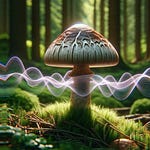
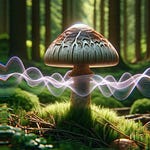
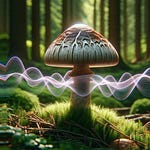
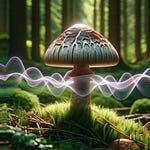
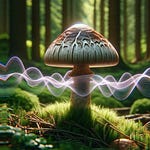
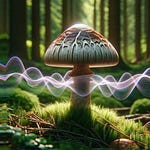
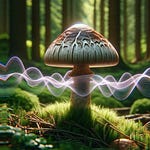
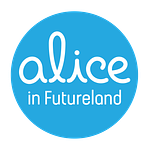
Memory of Healing in Water with Bill Bengston